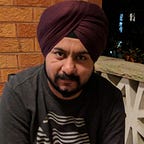What is missing in my resume?
A guide to help you put forward your experience the right way.
Without beating around the bush, here are some pointers on what should your resume contain, specially when you are working in Digital or Product domains.
- Please keep in mind that this is your resume, not your team’s. Mention the work which you have done and how it has contributed towards success and goals of the team. Stating what your team did, doesn’t really say much about you and doesn’t show case any quality to the reader of your resume.
- Write a short summary on top for your profile and experience. It has to be crisp and interesting. This is where you convince the reader that they should read more about you. Also, of you mess this up, no recruiter would go further and may reject you for the role.
- When you mention details about your experience, this where most of us try to squeeze in everything we did in that role. Instead, we should mention work worth highlighting, which makes us stand out anyone else in similar role. For people applying for Product or Senior roles, mention the impact your work created.
- Instead of mentioning your daily tasks, focus on the problems you solved and how you solved them. Please note, this does not mean you write long sentences, it needs to be brief, would be best if you can fit it in one line.
- Decide on a format how you want to write job titles along with company’s name, location(if you’ve worked in multiple locations), duration etc and be consistent with it. An online resume template might help you with this, there are tonnes out there.
- Remove anything which is irrelevant for the role you are applying for. If you are applying for a senior developer role, your college projects might not be relevant.
- If you’ve done some courses or certifications specific to the role you’re applying for, mention them and what you learned, just 2 lines, not too long.
- Review if your resume contains all the items listed below,
- Personal details
- Social Profile links : LinkedIn, Blog etc.
- Summary about your profile.
- Skills and competencies
- Certifications
- Professional experience
- Education
- References
9. Take feedback from someone and ask them to have a glance at your resume. If they are not able to understand your profile and expertise in few seconds, you’ve got something to be fixed mate. Your resume should be reader friendly, or rather UX friendly. Each part of your resume should be clearly segregated and easy to find. If the reader want to jump to your skills, he should be able to locate it within a second.
10. Use a template if you have to. It checks of the formatting and UX issues for sure. You can always improvise it to suit your needs, but would save you a lot of time.
11. Mentioning the references is optional, but at least mention that you can provide them on request.
12. Tailor your resume for each job role. Pick keywords from the job description and integrate what the recruiter is looking for.
For people who are in or transitioning into a Product role, some specifics:
- Whatever you resume showcases, reader should be able to infer that the customer/business benefited from it.
- Present quantified achievements rather than role responsibilities and daily tasks.
- This is tricky though, you should share what action you took and how did you measured success to validate the impact of your action.
- You would have heard “create a story” a few times. Its more of an interview tip, but your achievements should be justifiable with a story.
These points are based random search on Google and some feedback I have received for my own resume. I hope these help with improving your resume.
Good Luck !
